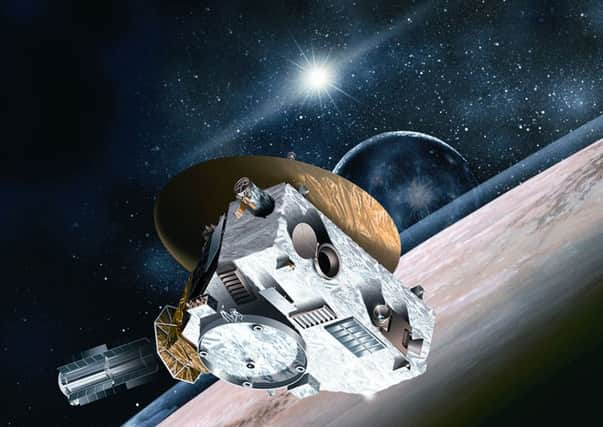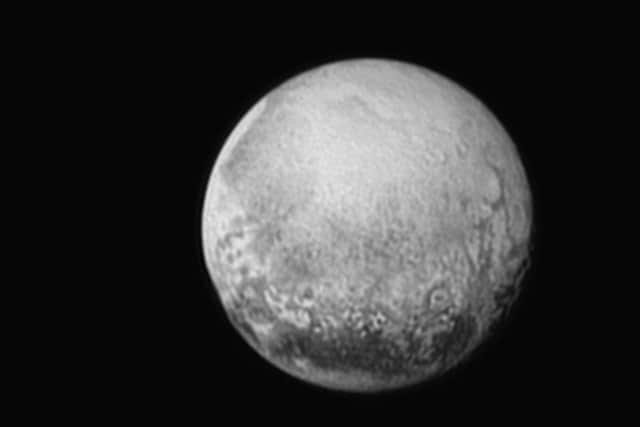New Horizons spacecraft makes Pluto fly-by


During the fly-by, the first close encounter with Pluto ever achieved, the American probe passed within 7,767 miles of the mysterious world.
At the Applied Physics Laboratory (APL) at Johns Hopkins University in Maryland, mission control staff and visitors clapped, cheered and waved American flags, chanting “USA, USA” in an outpouring of patriotic emotion.
Advertisement
Hide AdAdvertisement
Hide AdThe moment of closest approach for the New Horizons spacecraft came at 12.49pm BST, following a nine-and-a-half-year, three-billion-mile journey.
The American space agency Nasa posted a stunning new image of Pluto on Instagram, taken by New Horizons from a distance of 476,000 miles.
It clearly shows the dwarf planet’s surprising Mars-like reddish hue, and the enigmatic heart-shaped feature on its surface that has already become Pluto’s calling card on the internet.
Other photographs taken from a million miles away revealed evidence of cliffs, craters and chasms larger than the Earth’s Grand Canyon.
Speaking at APL, former astronaut John Grunsfeld, associate administrator of Nasa’s Science Mission Directorate, said: “It’s just amazing. This is truly a landmark in human history.


“People often think the success of missions like this is about engineers, the hardware, but the real key is team work, and that’s what Nasa excels at.”
New Horizons has taken more than nine years to reach Pluto, carrying with it the ashes of the astronomer who discovered the remote icy object in 1930.
When the mission was launched in January 2006, the aim was to reach the outermost of the Sun’s family of nine planets. Seven months into the probe’s epic journey, international astronomers downgraded Pluto’s status to “dwarf planet”.
Advertisement
Hide AdAdvertisement
Hide AdBut despite its small size – just over two-thirds the diameter of the Earth’s moon – Pluto looks and behaves like a fully fledged planet, having an atmosphere and no less than five moons of its own.
Pluto is just under three billion miles from Earth, one of a number of distant “worldlets” in a region known as the Kuiper Belt.
It is so far away that its light takes more than four hours to reach the Earth.